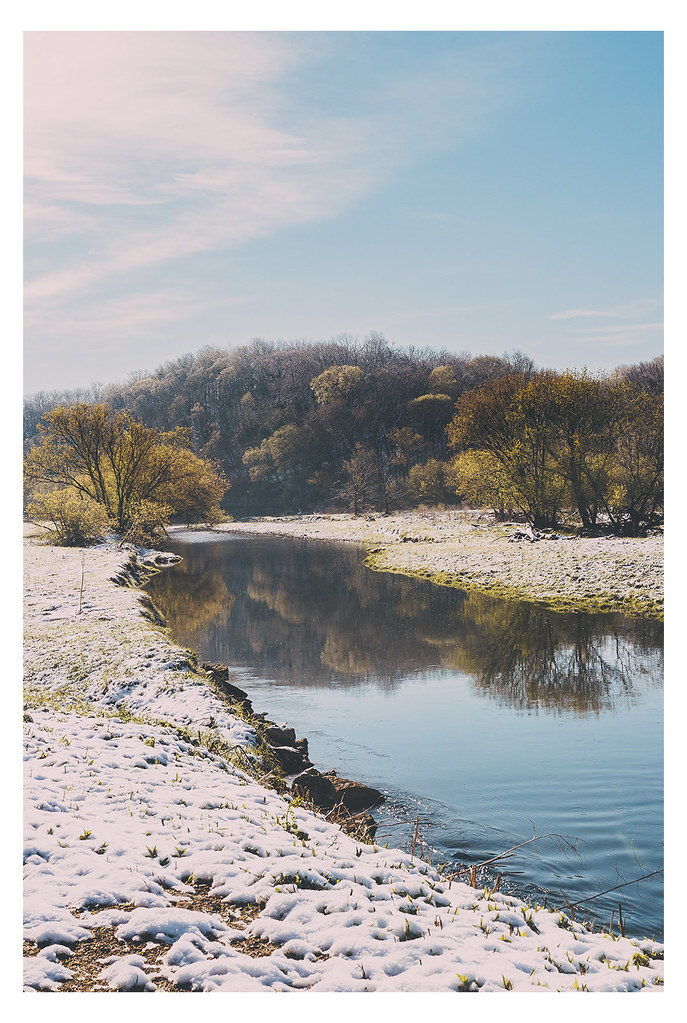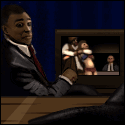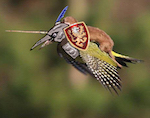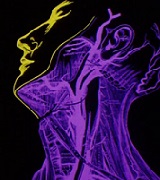|
xzzy posted:If you got a modern body, expose for the highlights (that is, what everyone calls ETTR). It'll look like poo poo on the LCD but you can recover the shadows easily in post. I think ETTR means exposing to get the brightest pixels without clipping. It’s that method or exposing for highlights.
|
|
|
|

|
| # ? Jun 7, 2024 22:22 |
|
You should expose to retain detail in whatever the brightest thing you want to have detail in your final image. Sometimes there is no detail worth preserving in the sky. The best solution might be to shoot at a different time of day or with different weather conditions. In some situations you may have difficulty producing a good, natural looking image, and it may be better to lose detail in the sky or silhouette foreground elements. Also highlight clipping indicators might not accurately reflect what is preserved in the raw file.
|
|
|
|
huhu posted:I've been curious about exploring video through photography. I've been doing time-lapses and I'm thinking of trying out cinemagraphs next. Are there are other interesting ways to explore this area? I don't know if it counts as an "interesting way" but a couple of months ago I pasted in some stills on a video I made of a wildlife encounter; I had a minute or two of blurry nothing video that had interesting (to me) audio, and I had some still images I'd shot of the individual bird that is making those sounds in the blurry video. So I slapped the photos on to the video, for about 10 seconds each, just to have something to go with the audio before the next segment that is just regular video. Maybe there's a name for this clumsy blend of still and video, and maybe there's a way to make it more interesting than my "look at the pretty noisy birdie!" Time-lapses seem like they could present endless fun. Getting some motion in - stick the camera on a rotating kitchen timer, for starters - or finding really unusual perspectives (extreme low / high angle, through a narrow window, etc.) makes for some very interesting time-lapse videos. Also, obviously, subject matter - any construction happening near you? heavy weather? dramatic sunsets/sunrises? I didn't know what a cinemgraph is so I googled it, and found this ridiculous gushing blargh of hyped-up nonsense. Cinemagraphs are a fancy way of pronouncing GIF By all means, make some sexy loops. Those do look like fun, despite the pretentious name.
|
|
|
|
So I've been looking at tilt shift stuff lately, and I'm confused. The tilting I get, but is shifting the lens up / down significantly different from just... Moving the camera itself up or down? If so, what is that difference?
|
|
|
|
CodfishCartographer posted:So I've been looking at tilt shift stuff lately, and I'm confused. The tilting I get, but is shifting the lens up / down significantly different from just... Moving the camera itself up or down? If so, what is that difference?
|
|
|
|
TheLastManStanding posted:Say you wanted to photograph a tall building. If you aim the camera at the 1st level of the building your vertical lines will be nice and parallel, but the ground will take up half your shot. If you aim halfway up the building, then the building will take up the whole frame, but the perspective will distort your vertical lines and your focus plane won't be parallel to the front of the building. By shifting the front up (or the rear down) you can compose your shot such that the building fills the frame while maintaining parallel verticals and a proper focal plane. I guess I just don't get why it works. Does shifting the lens up that extra inch or whatever make a difference compared to just lifting the camera an extra inch? If so, why?
|
|
|
|
Consider the lens fixed in place. There is an image projected on the plane of the film/sensor. If the top of a building is cut off in the image, you can just move the film/sensor down so the part of the image that was cut off is now projected on the film/sensor again. As long as the imaging circle is big enough to include what is in the final image, you can move the film/sensor around revealing what would have been normally cut off in the final image. Really the lens is moving and the camera is fixed, but I think it is easier to visualize moving around the plane/screen/film/sensor the image is being projected on.
|
|
|
|
Think about what the lens is doing. It's projecting an image circle back onto the image plane. If you move the whole camera up an inch, you are getting a slight (almost imperceptible at any kind of distance) adjustment in the view area due to parallax. If you're shooting a building, you'd need to raise the camera by several metres even for relatively low-rise buildings to get a flat focal plane with the whole building in the frame. if the camera stays still and the lens moves up an inch, then the image circle moves. Remember that the image is inverted when it hits the image plane. Now imagine what happens to your image if you take an inch off the bottom of your photo and add it to the top. Your image circle is pretty small, a few millimetres makes a big difference.
|
|
|
|
Huh, that makes a lot of sense! Dunno why that never occurred to me.
|
|
|
|
Hello! The lighting thread is dead so I'll bring my extremely basic lighting question here. We need "students sitting with a teacher at a piano" shots for my wife's piano studio. Here's our room (loosely):  (Please forgive misspelling ceiling.) I also have a clamp light: https://www.globalindustrial.com/p/...FRoCzSAQAvD_BwE with a diffuser available, and the on-camera flash of my X100s (and an XT10 with the 18-50). Do I have any easy set-up options that will read as "warm and inviting?" I'm pretty sure I could find my way to "stark and mysterious" but the more time I spend durdling set-up the less I can keep my models interested (ie, my kids). Huxley fucked around with this message at 15:15 on Jul 11, 2019 |
|
|
|
In a dark room (windows closed if possible) Two lights 180° apart from each other, key light in Rembrandt position, hair light opposite. Yellow filter the key light and white balance on the hair light. I've found casting the key light down and the hair light up is usually pretty pleasing, but how much will depend on circumstances. If you can't simply pull blinds on windows, use them! Without direct sunlight casting into the room, the windows are key lighting, set up a hair light and blue filter it. White balance on the hair light and you should get a warm color from the window lighting. Don't go too blue on the hair light because you don't want to be too yellow in post. By blue I mean use a bright CFL or something in your clamp light. Maybe use a reflector opposite the window for fill lighting, depending on crop. You can be as simple as using foam board for the reflector. um excuse me fucked around with this message at 15:41 on Jul 11, 2019 |
|
|
|
I'm headed to Ireland for the first time on vacation in a few weeks, and I'm trying to figure out what, if any, additional gear I should get before. I only got into photography last year and am still inexperienced (although happy with the way my shots of Iceland turned out last fall). Here is what I have so far: Canon Rebel T6 18-55mm (kit lens) 75-300mm (kit lens) 50mm 1.8 10-18mm wide angle spare batteries and memory cards manfrotto tripod lens brush flashlight/headlamp (maybe both) some sort of cable-release, haven't purchased this yet I'm mostly interested in taking landscape, and likely some wildlife. We're also going to be spending one night near a cool Dark Sky area, so I'd like to try my hand at some long-exposure star photos, providing the weather cooperates. Is there any thing that stands out that I should pick up before the trip? A few tutorials that I've watched have mentioned polarizing or neutral density filters. Would these be a necessity?
|
|
|
|
Filters are cool but only spend money on them if you've put effort into learning how to use them. I'm sure two weeks is plenty of time to learn the ropes but it if you don't do it it'll be wasted space in your luggage. Ditch the 50mm and lens brush. Use a lens cloth if you gotta clear smudges/water. If your body has a two second delay shutter you can skip the cable release too. Having one is never bad, but I almost never use mine.
|
|
|
|
Even at this time of year Ireland is going to be mostly overcast and grey. ND filters can be nice if you are going to shoot water features, but you probably won't need a grad for the sky. If you're mostly going to be in the city then a moderately wide-ish lens is fine. You aren't always going to have room to step back and get more distance so a 17-18mm on the bottom end is nice to have. You may not need to go much below that unless you like the fishbowl distortion of your ultrawide. I'm a big fan of the Sigma/Tamron 17-50 f/2.8 as a general purpose walking about lens for APS-C. It's not crazy expensive and it's a definite step up from the 18-55 kit lens in terms of image sharpness and the fixed aperture through the zoom range. It also has image stabilisation, which is nice for the places where tripods aren't allowed. For wilderness shots, I find that going narrower helps to give a better sense of scale. The standard advice is to go wide with landscape, but I'm preferring normal or even slight telephoto fields of view more and more these days. Irish wildlife is mostly birds and bugs. You'll want length for the birds and some kind of ghetto macro for bugs. Ghetto macro basically means any reasonably long lens (100mm+) with a short minimum focus distance (<100mm) You can get surprisingly good shots of small things with a decent telephoto if you can keep the shutterspeed high enough.
|
|
|
|
Big McHuge posted:I'm headed to Ireland for the first time on vacation in a few weeks, and I'm trying to figure out what, if any, additional gear I should get before. I only got into photography last year and am still inexperienced (although happy with the way my shots of Iceland turned out last fall). Ditch the 50mm - I love mine but for travel it's not worth the weight when a good mid range can fill its role. Ditch the lens brush - just get a pack of cloths off amazon. Consider ditching the 10-18mm wide angle. how heavy and big is it? Your 18-55mm can reporoduce a lot of the same shots with some repositioning, it's a great focal length to own but its something I'd consider leaving it at home if I was travelling. Don't bother with the cable release - unless you get seriously into landscape the timer on the camera will be fine, if you really want one maybe get a wireless remote (if your camera supports it) amazon basic one is like £6 and works fine. Maybe leave the flashlight depending on what your doing? - I used to always take my flashlight but except for the one time we explored some caves on holiday, I've not used it once while travelling. As for filters, as others have said it takes some learning to use them well and decent ones are more costly than you would think. To add to all this, make sure you have a really good bag, from the sounds of things you're gonna be walking a LOT and none of those cool looking peak design messenger bags are gonna cut it. If you haven't already invest in a solid respected full backpack with all the various extra straps to proportionally spread out weight. You look like a dork but your back will thank you 3 hours into that hike. Helen Highwater posted:I'm a big fan of the Sigma/Tamron 17-50 f/2.8 as a general purpose walking about lens for APS-C. It's not crazy expensive and it's a definite step up from the 18-55 kit lens in terms of image sharpness and the fixed aperture through the zoom range. Seconding this. I own the Sigma AF 17-50mm f/2.8 and its a really truly great lens for APS-C, probably the only negative you can put against is its a little on the heavy side compared to most kit lenses of the same focal length but the quality is so much better its worth it. It stays on my camera probably 85% of the time.
|
|
|
|
This is all assuming that you're staying in homes or hotels versus backpacking and having to lug all of this stuff at all times... I think you want all of your zooms. If anything you could do without the wide angle zoom. You probably don't need the 50/1.8 but it does give you some capabilities that the zooms don't, and it's small and easy to pack. I find the long telephotos (your 70-300) essential on vacation. Get a ND filter if you want to smooth out water. Otherwise you can get similar results bracketing exposures and post-processing. A CPL is a good idea. Prior to my recent vacation I was close to dropping a few hundred on a drop-in filter setup but in the end went with an inexpensive CPL and graduated ND filter and I'm so glad that I did. That other stuff is too much to mess with on vacation unless the vacation is specifically about taking photos.
|
|
|
|
I like to shoot portraits of my family on vacation, so I'd probably bring the 50mm. The Canon 24mm 2.8 is a good compact affordable walk around lens.
|
|
|
|
I would drop the ultra wide angle, the 50mm, tripod, and cable release. That’s a lot of poo poo to haul. Is the 18-55 stabilized? Even more reason to not pack the tripod then.
|
|
|
|
Gonna complicate things and play devil's advocate -- I did Austria, Venice, London, and Paris all with 17-35 and 50mm on full frame and the heavy-duty gorillapod and very rarely found myself frustrated by those focal lengths. YMMV in Ireland if you're doing less city and more nature, but that was my experience.
|
|
|
|
I guess I should have been a bit more specific. We're renting a car and driving around the country with friends. Sadly there won't be any epic hikes, as they are more of the "find a pub and hang out" type of folks (my gf also had foot surgery earlier this year and super long hikes would be a bit much for her). I absolutely want the tripod as I really want to try the long exposure shots at the dark sky park, and possibly experiment with some HDR style photos. Weight isn't too much of a consideration, since I would imagine at most we'll be walking around for a few hours at a time, and I have a camera backpack that serviced me well in Iceland last year with no issues. For the lens brush, it's pretty small and lightweight, and I have a few cloths as well. I actually got a lot of use out of the brush on my last trip. The flashlight/headlamp is included so I don't walk off a cliff at the night sky park. I'd hate to drop the 10-18 wide angle since I plan on getting a lot of landscape shots. I'll definitely look into the sigma tamron 17-50 though, it seems reasonably priced on Amazon.
|
|
|
|
You don't really have anything fast for shooting indoors or at night. A 50mm on a canon crop body is pretty tight. Not a lot of options come to mind. If you are interested in astro photography the only really budget friendly options are manual lenses. Another upgrade to your kit lens would be the sigma 18-35mm f1.8, whose size isn't too travel friendly and has a shorter focal range, but a constant f1.8 aperture.
|
|
|
|
The impulse to go ultra wide for landscape isn’t wrong but it’s not totally correct either. You got to have something in the foreground to contrast against the background, or else the landscape looks small as hell. Ultrawides make distant things tiny.
|
|
|
|
holocaust bloopers posted:The impulse to go ultra wide for landscape isn’t wrong but it’s not totally correct either. You got to have something in the foreground to contrast against the background, or else the landscape looks small as hell. Ultrawides make distant things tiny. This is truth. A lot of people just bang on the wide lens for landscapes 'because it's a landscape lens innit?' and then wonder why the majestic mountain range looks flat and uninteresting. Ultrawides are really for indoor shots or where you want to do stuff with the spherical distortion specifically (architecture from low. close angles and so on).
|
|
|
|
Well this has been rather sobering. I suppose next time I should consider which shots I'll be going for prior to purchasing a lens. That being said, if I am looking to get some long-exposure shots of the milky way what kind of lens should I be looking for?
|
|
|
|
Big McHuge posted:Well this has been rather sobering. I suppose next time I should consider which shots I'll be going for prior to purchasing a lens. Don't sweat it. It's all a game of experience. Lenses hold value and can be easily flipped. A fast lens, F2 to F1.4 -- but really anything will do in a pinch. And to your comment about HDR-like photos. Read up about compositing images using bracketed exposures. That's far more useful in practice than HDR. You'll need photo editing software for this, though, like Photoshop or an equivalent.
|
|
|
|
Wide-angle lenses inherently capture more of whatever you see before you so it's harder to isolate a subject, and they also have more depth of field so you can't blur out non-subject stuff, and they also make distant things (like those awesome mountains you saw that would make a great photo) look tiny in the resulting image. Although they're pretty commonly used for landscape photos, how to use them is a bit counterintuitive compared to how your eyes see and determine good landscapes. Like anything else, it just takes practice and learning how to "see" in wide-angle.
|
|
|
|
Fools Infinite posted:Another upgrade to your kit lens would be the sigma 18-35mm f1.8, whose size isn't too travel friendly and has a shorter focal range, but a constant f1.8 aperture.  Driftless IL by charliebravo77, on Flickr Driftless IL by charliebravo77, on Flickr ATX by charliebravo77, on Flickr ATX by charliebravo77, on Flickr ATX by charliebravo77, on Flickr ATX by charliebravo77, on Flickr Sage by charliebravo77, on Flickr Sage by charliebravo77, on Flickr Bingley vom Herbstmond by charliebravo77, on Flickr Bingley vom Herbstmond by charliebravo77, on Flickr West Central IL Exploration by charliebravo77, on Flickr West Central IL Exploration by charliebravo77, on Flickredit - ** important note** the USB dock should come with the lens because mine required a LOT of adjustment to get it focusing properly. charliebravo77 fucked around with this message at 18:12 on Jul 12, 2019 |
|
|
|
Big McHuge posted:That being said, if I am looking to get some long-exposure shots of the milky way what kind of lens should I be looking for? Any of your lenses will be fine so pay more attention to composition (a shot of the Milky Way and nothing else is boring as gently caress). Aperture won't be a huge issue unless you want to catch short lived events like meteors. 10mm to 35mm will probably be your typical focal range. Since you're on a crop body, don't be afraid to go wide. Look up the information on focal length versus exposure time to understand how long you can go before getting star trails. Also learn techniques to focus in the dark and practice them because it WILL be an issue your first time out. If the moon is out you get lucky but moon+Milky Way is not a good combo for photos. Buy the Stellarium app so you can find poo poo. Don't expect too much, getting those fake as gently caress super vibrant Milky Way shots are all stacks of photos taken with a tracking mount. But you can do some fun stuff with single exposure too.
|
|
|
|
I've always followed the rule of 1/focal length for minimum handheld shutter speed. However, as I learn more about portrait and landscape photography, I'm wondering if I'm wrong. The articles say that the only way to get the sharpest possible photos is a tripod with a shutter release. Does that apply to all photos taken or just to things with a shutter speed slower than 1/focal length?
|
|
|
|
The "tripod and remote trigger EVERY SHOT" people are generally pixel peepers. You can get acceptable sharpness handheld as low as 1/8 if you're careful. It also depends on your target media. If you intend to print wall sized then maximizing sharpness gets more important. Web viewing? No one's gonna be able to tell something is soft unless you completely missed focus.
|
|
|
|
Shake reduction also throws a lot of those rules out the window. When shooting with the Rolleiflex? Yeah I prefer a tripod and self-timer/cable. Shooting with the a6000 and an OSS lens? gently caress it we're hand holding from a moving car.
|
|
|
|
huhu posted:I've always followed the rule of 1/focal length for minimum handheld shutter speed. However, as I learn more about portrait and landscape photography, I'm wondering if I'm wrong. The articles say that the only way to get the sharpest possible photos is a tripod with a shutter release. Does that apply to all photos taken or just to things with a shutter speed slower than 1/focal length? Self-timer on 2 seconds. Easy stuff. But for real, sometimes it’s nice to introduce some element of motion (not like the Best Photographer thread joke), so a slower shutter speed can make choppy water look better, for example.
|
|
|
|
Slower shutters are a key component to panning photos as well. So like most things it depends on what end result you require.
|
|
|
|
Tripods can be really valuable for landscape shots even if handheld shooting is totally possible. For one, it lets you use live view zoom and manual focus to get the focus exactly where you want it every time. It also gives you a better opportunity to evaluate your composition and reframe if necessary. Tripods aren't just for long exposures, getting used to using one for pretty much any static scene will 100% enhance your photo quality by a significant amount.
|
|
|
|
i'm going on a kayaking trip in august. looking for a cheap camera that's going to be okay considering the wet conditions. is the fujifilm disposable camera okay? maybe i'll pick up 3-4: https://www.amazon.ca/Fujifilm-QuickSnap-Waterproof-Single-Camera/dp/B00004TWM6 alternatively i see fujifilm has a line of waterproof digital cameras, which i don't mind shelling out for...
|
|
|
|
Is there anyone who can clarify the word “storytelling” in photography? I really can’t wrap my head around it how you suppose to tell _a story_ with a single picture. Multiple pictures sure, but single picture?  Little background: My background is from comics and illustrations where it is either really typical to have series of pictures or at least the single picture has a clear context (editorial, storybooks) to convey a story innit. I would still question is there really any possibility to actually tell a story in a single picture without clear context otherwise, but again, I’m not that pro nor I don’t have the best Any proper books or other than “Look at my pretty picture”-resources to recommend about the subject?
|
|
|
|
I'm not sure there's going to be a satisfying answer for you, earnestly. To me, it's a the presence of symbolic. Who or what are we looking at? What does the environment say about the subject? What are the details that tell you what happened before or what may happen later? Can you relate to it on some level, emotionally or mentally? I think probably the most important aspect is encapsulating time, in some manner. Single shots intrinsically limit your ability to form conventional narrative structures. Instead, a lot of it is as you've noted, contextually driven. Basically, does it go beyond the purely descriptive (this is a photo of a person, shoulder height up with a plain t-shirt and the background blurred) to something that tells you about the subject and what they are possibly feeling and/or doing (they're sitting around a table with others in similar dress, laughing and drinking coffee). What is simply descriptive is a matter of subjectivity, though, and divorced enough from any of the symbols in a photo and anything can lose its story to a particular viewer. Phoneposting so I'm not in the best place to dredge up examples or literature but I hope sharing this helps a little.
|
|
|
|
Skizzzer posted:i'm going on a kayaking trip in august. looking for a cheap camera that's going to be okay considering the wet conditions. is the fujifilm disposable camera okay? maybe i'll pick up 3-4: https://www.amazon.ca/Fujifilm-QuickSnap-Waterproof-Single-Camera/dp/B00004TWM6 The Fujifilm waterproof/shock proof point-and-shoots seem like good value if you want decent photos from something that can survive a drop or two or getting wet. Plus they’re around $200 or so, which is peanuts in photo money.
|
|
|
|
The common explanations for "story" in a photograph is "does it have a foreground/midground/background that draws your eye through the scene" in the simplistic sense to "the photographer has successfully conveyed their mood or interpretation of a scene in a way unique to that person" in the subjective artistic sense. No one uses the term "story" literally. Buy 'The Art of Photography' book and read it.
|
|
|
|

|
| # ? Jun 7, 2024 22:22 |
|
xzzy posted:No one uses the term "story" literally. I do. Pictures contain more information than, say, a description of the pixels that form them. The context of and the subtext in a photo can represent more than what's depicted literally, including a narrative.
|
|
|


























